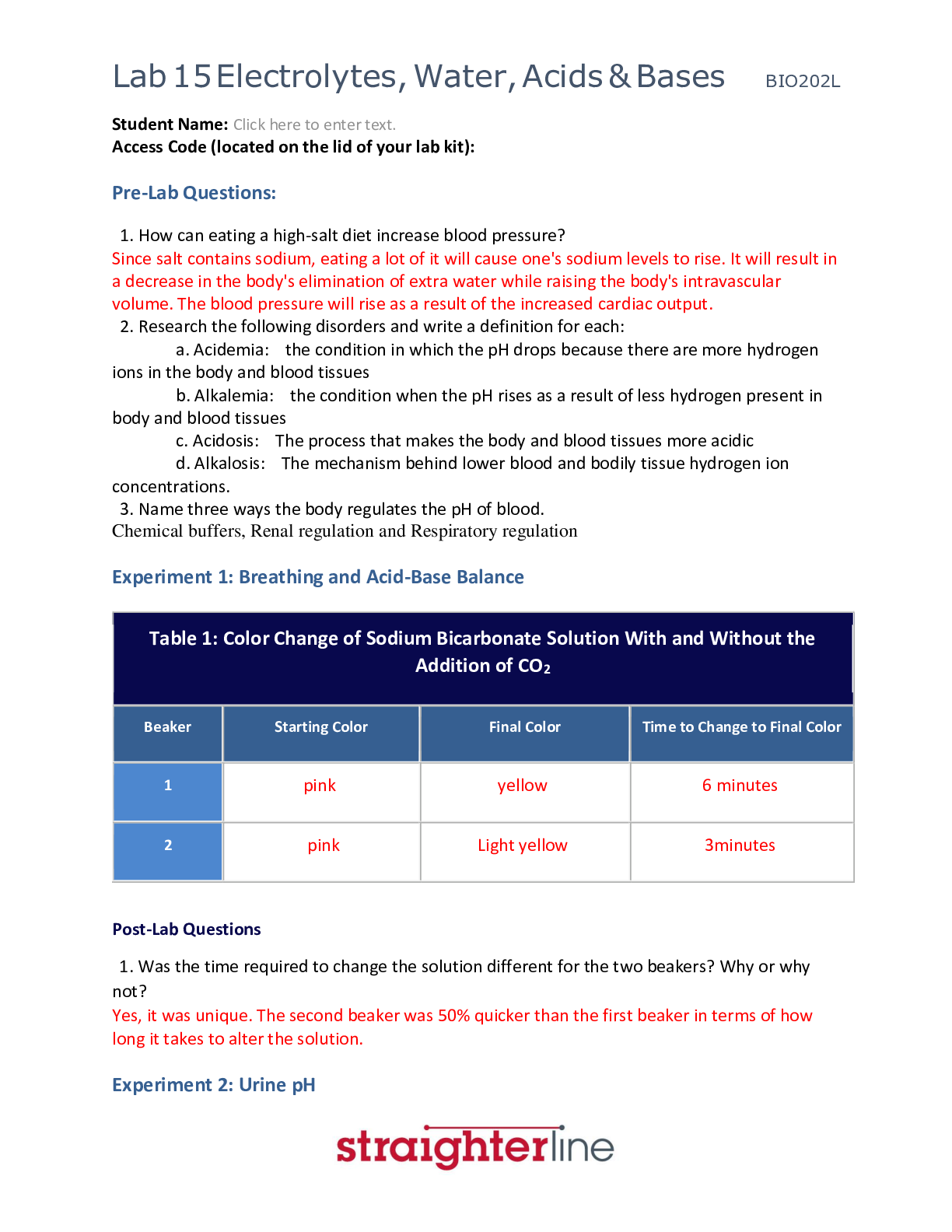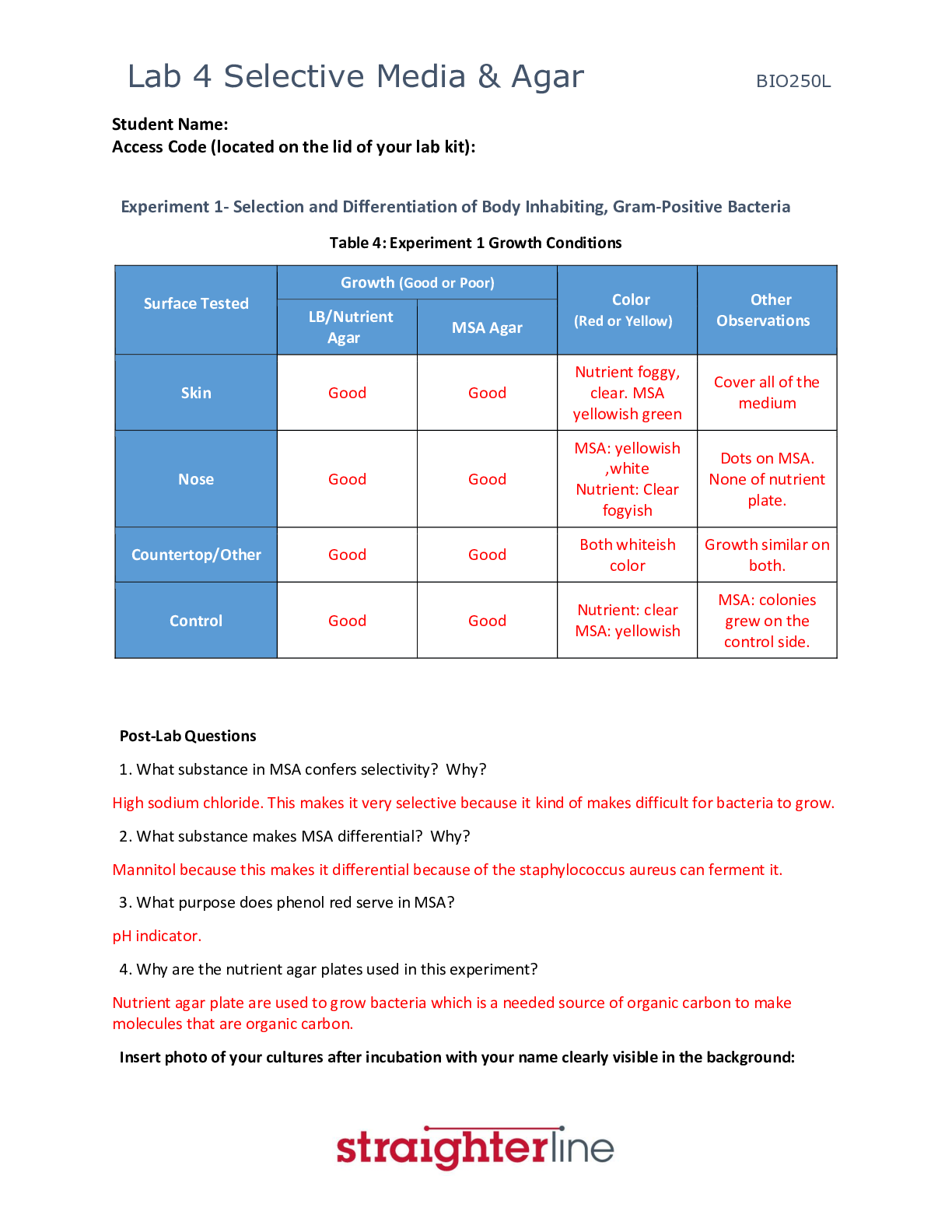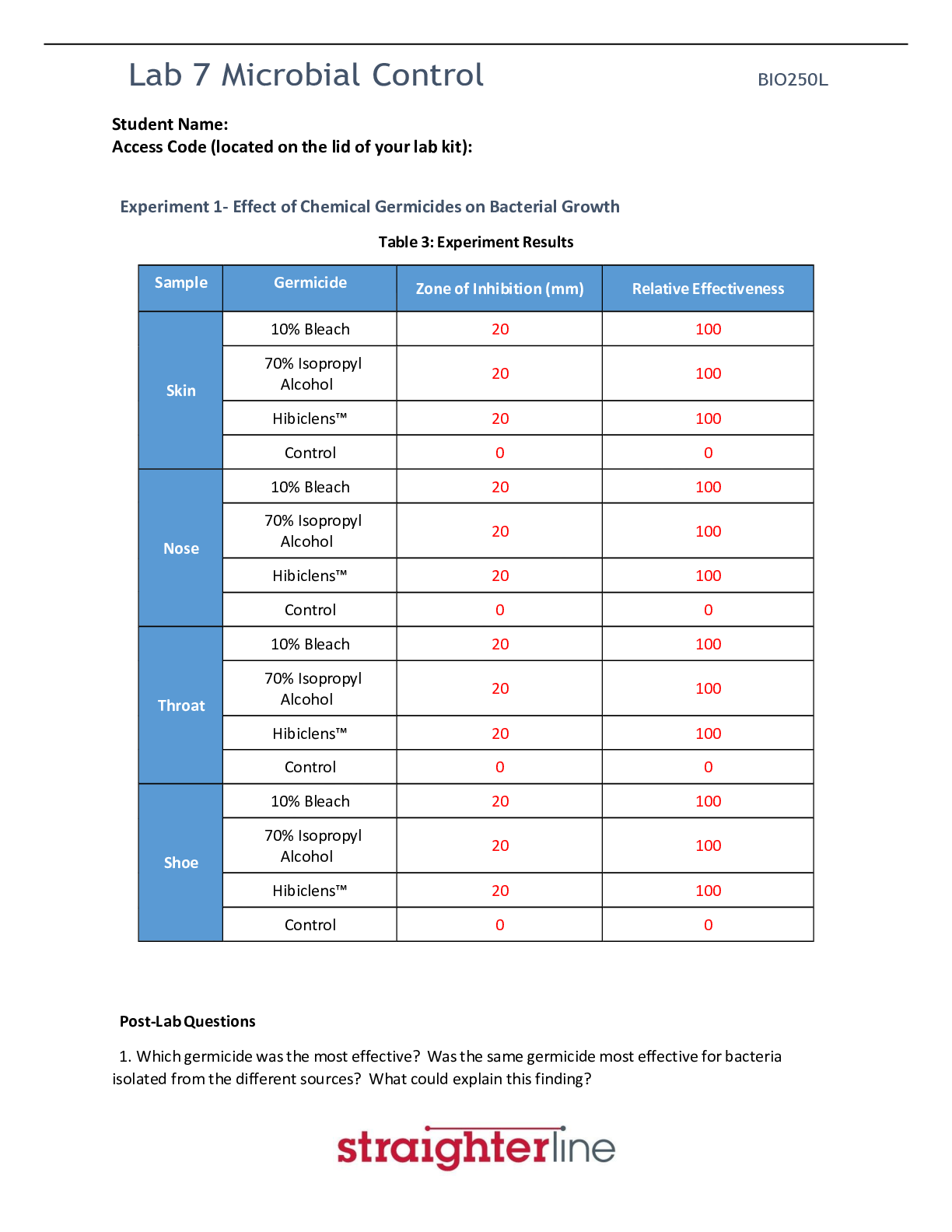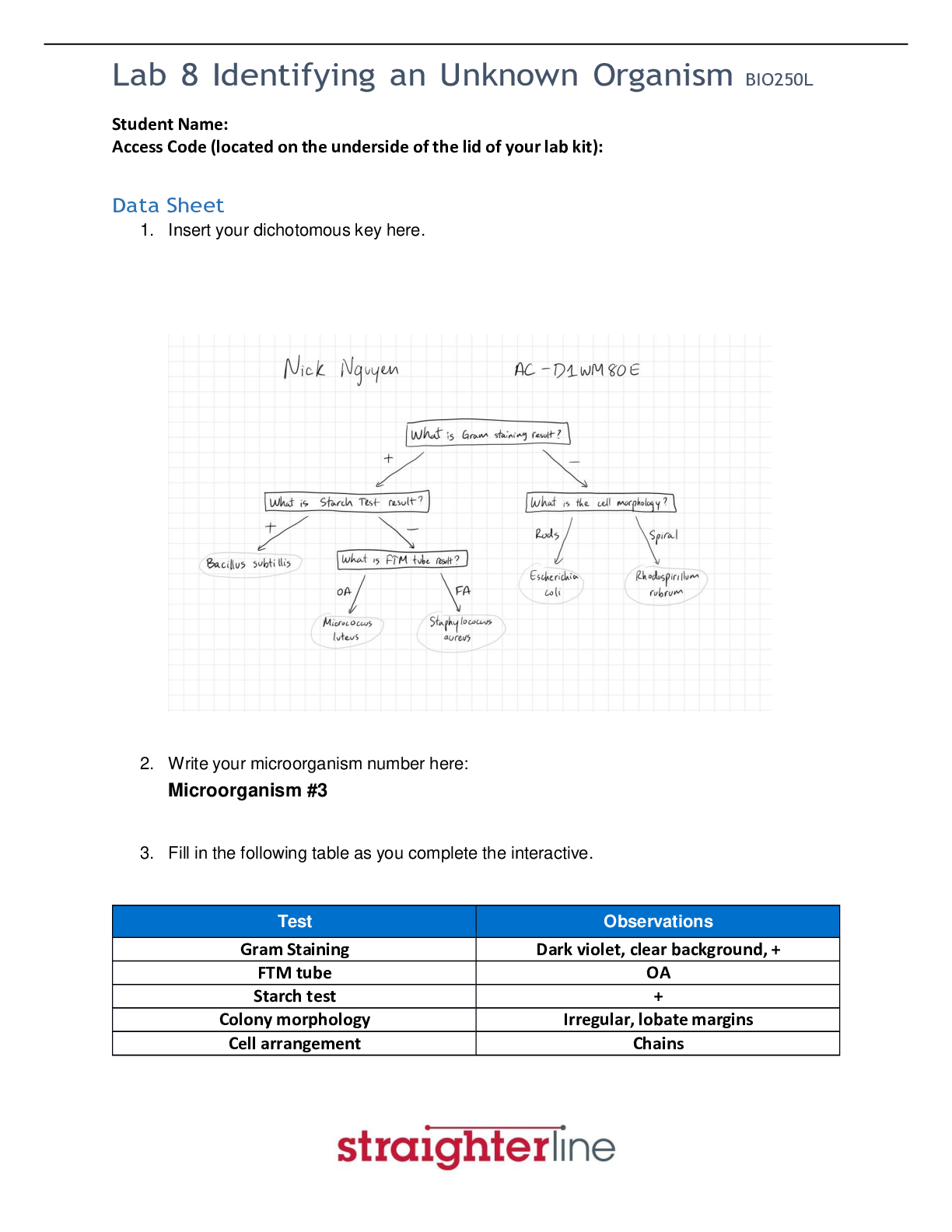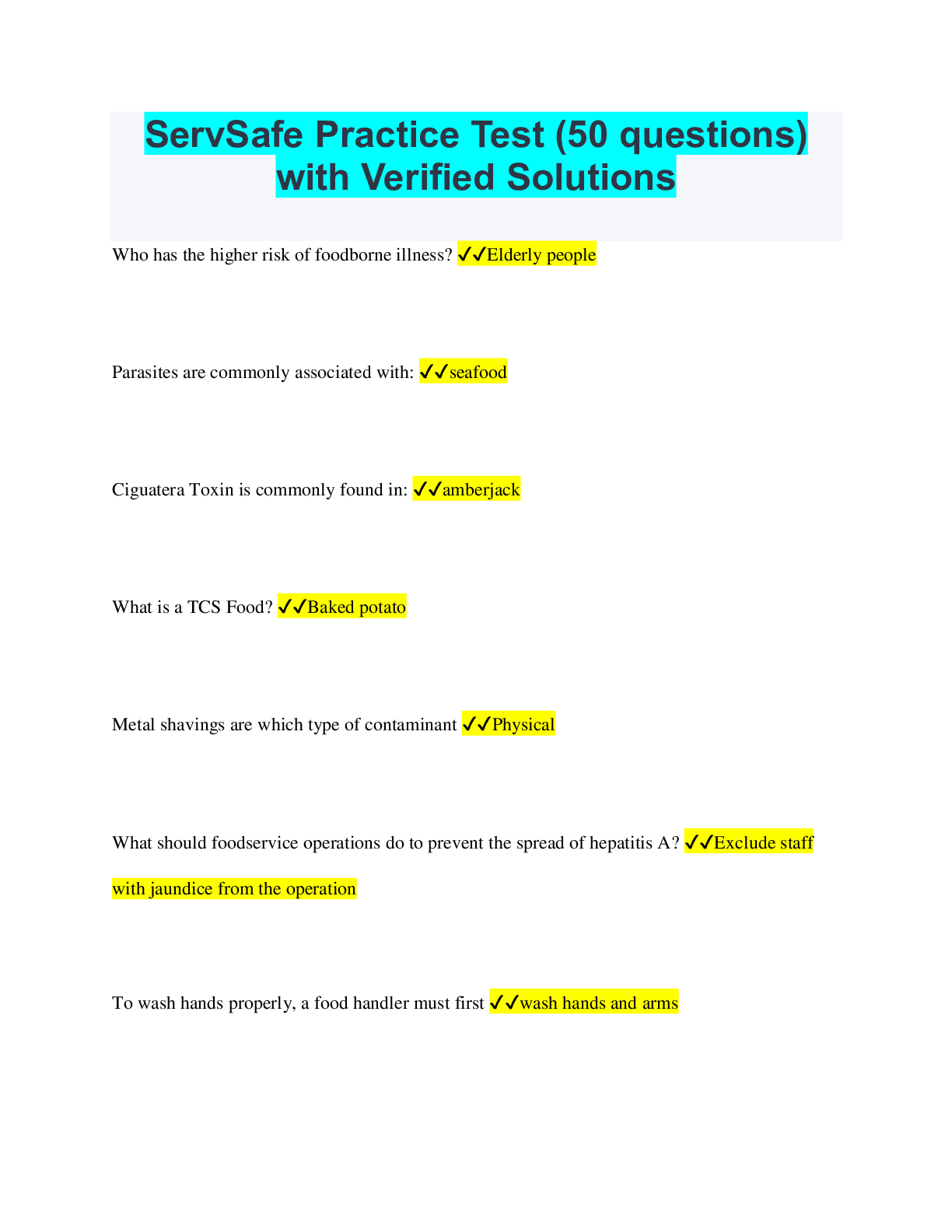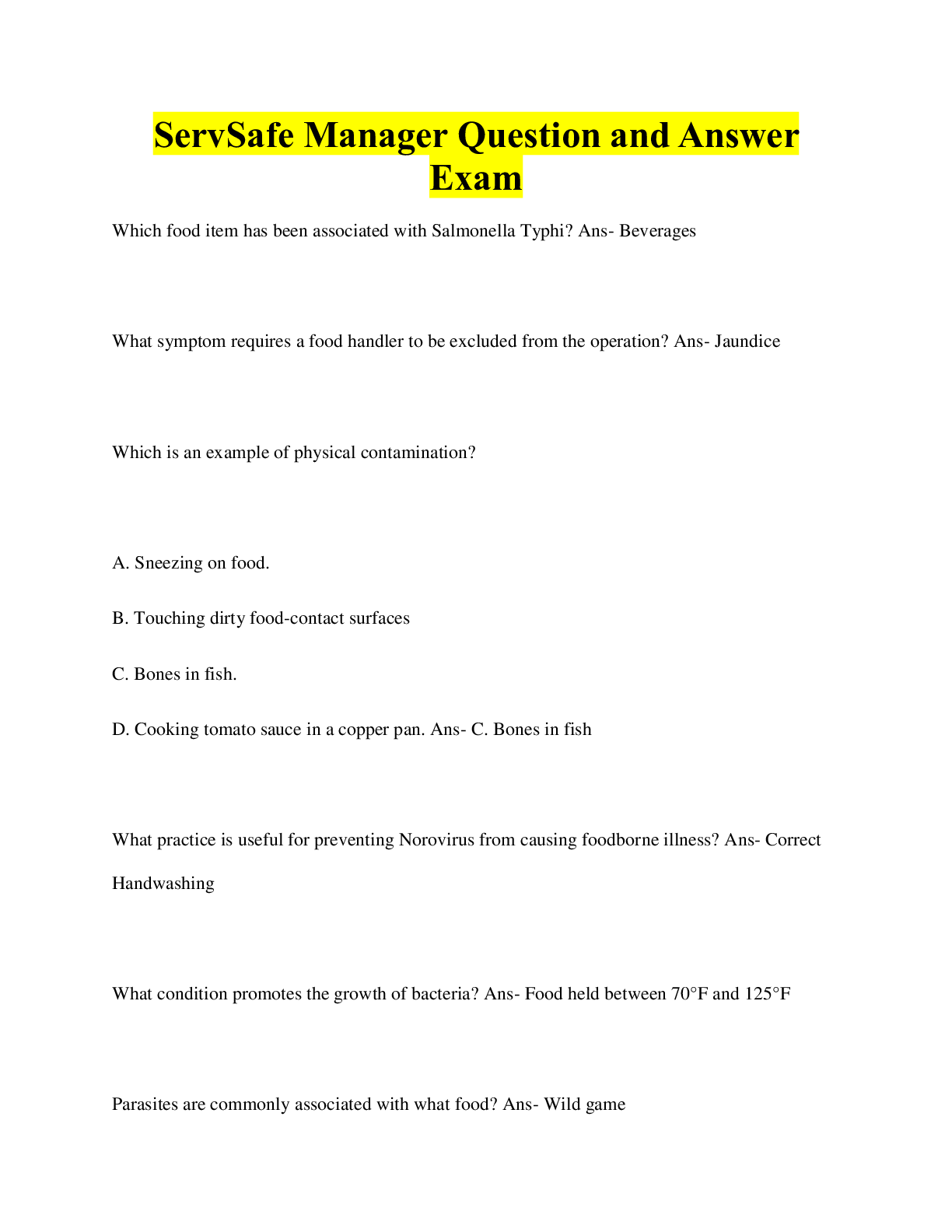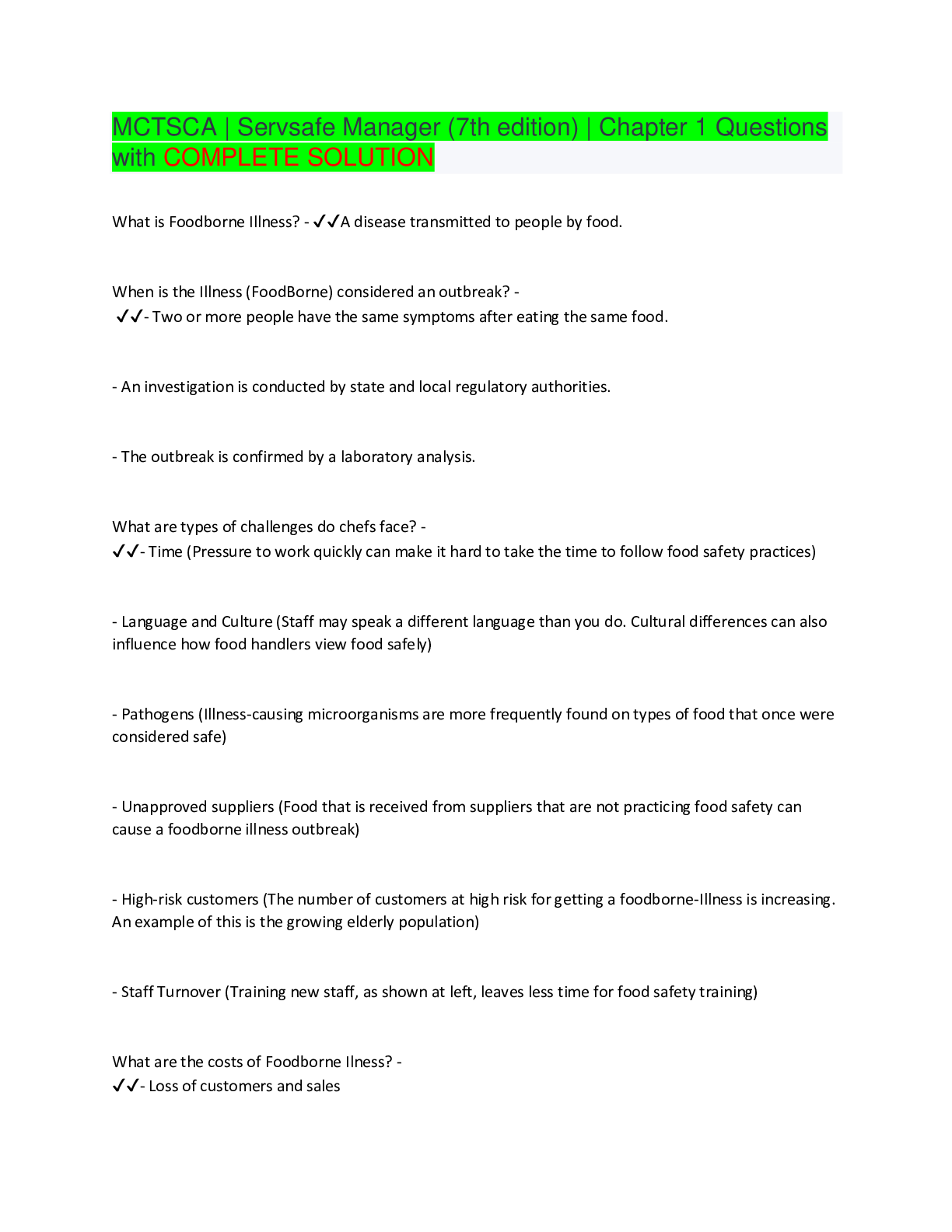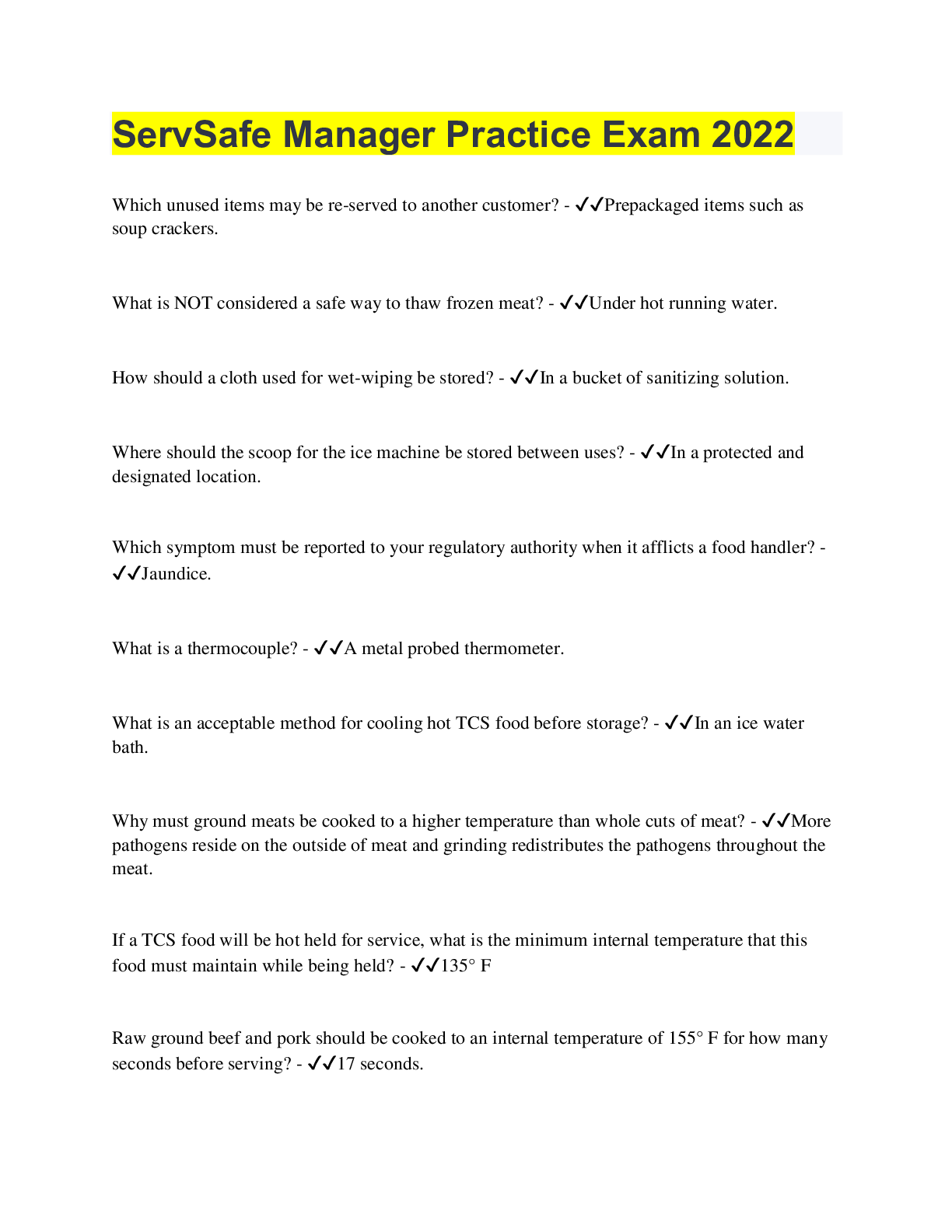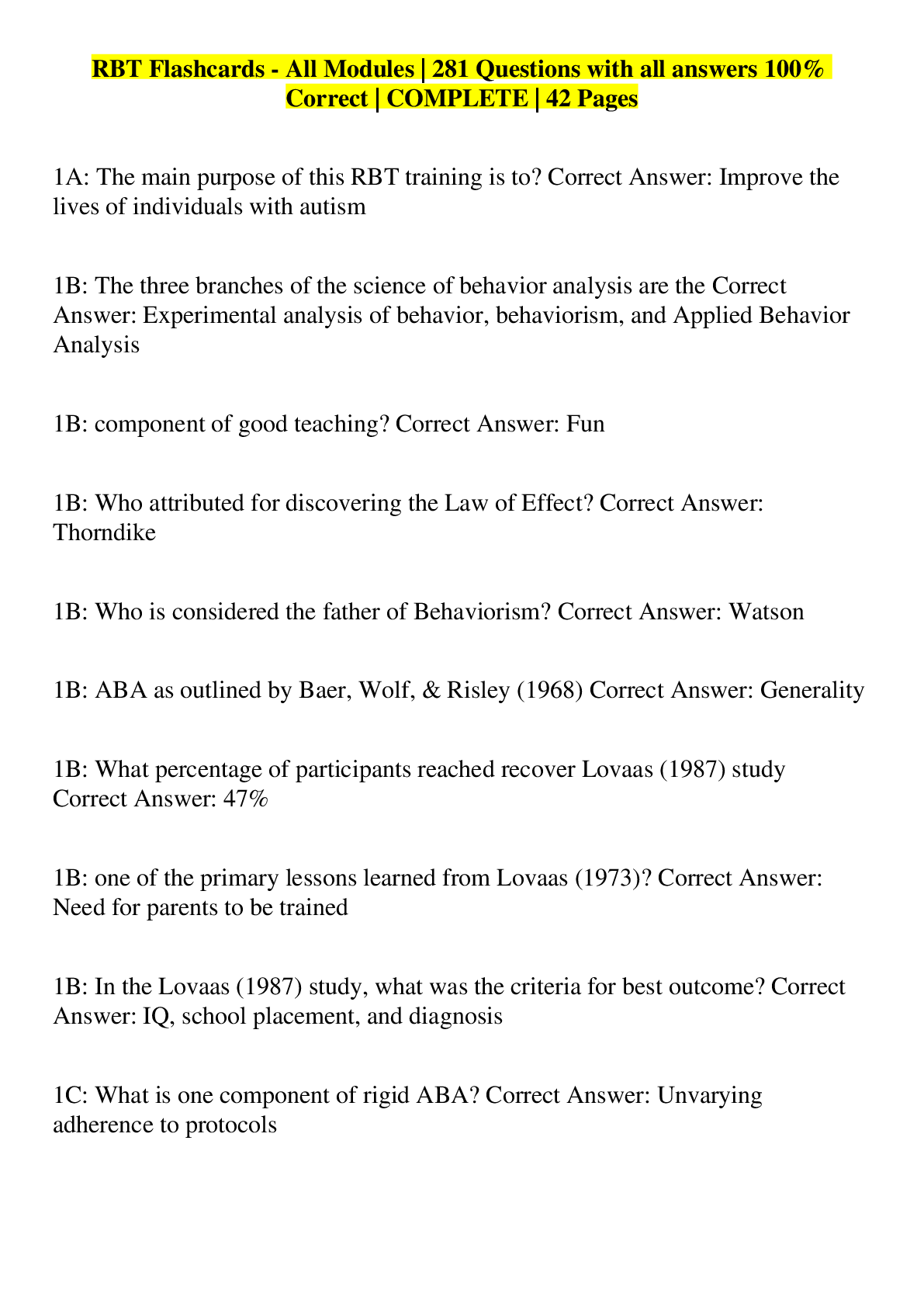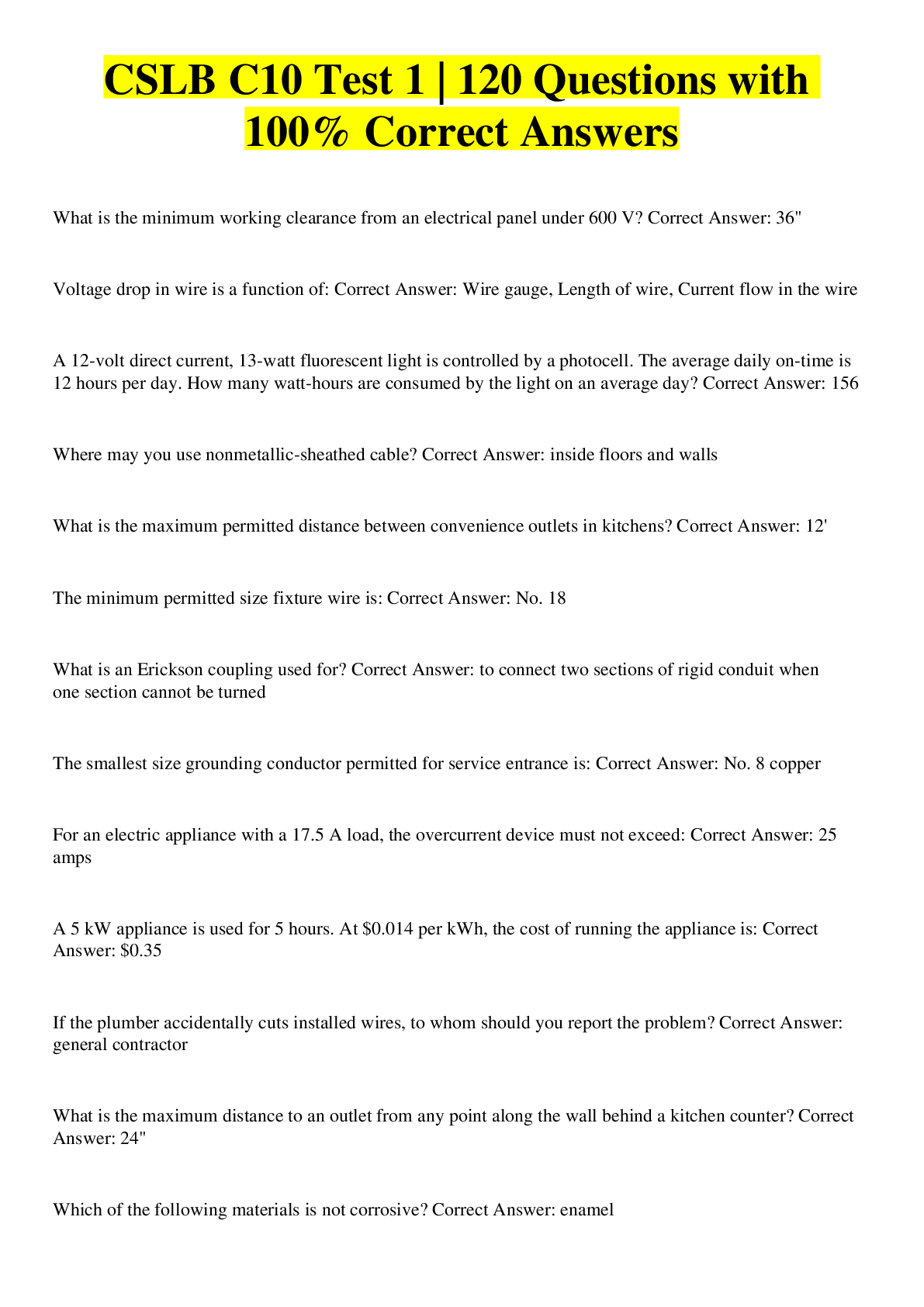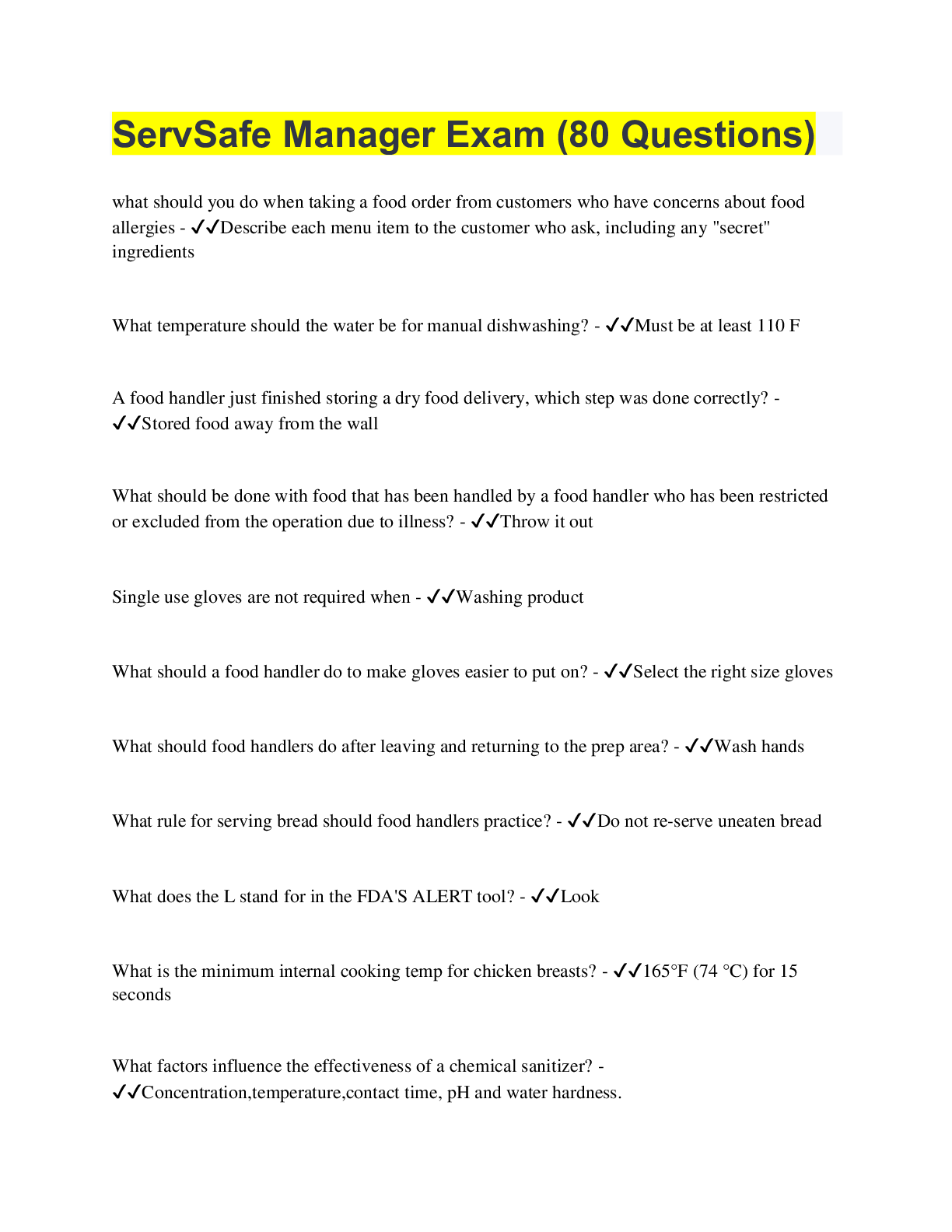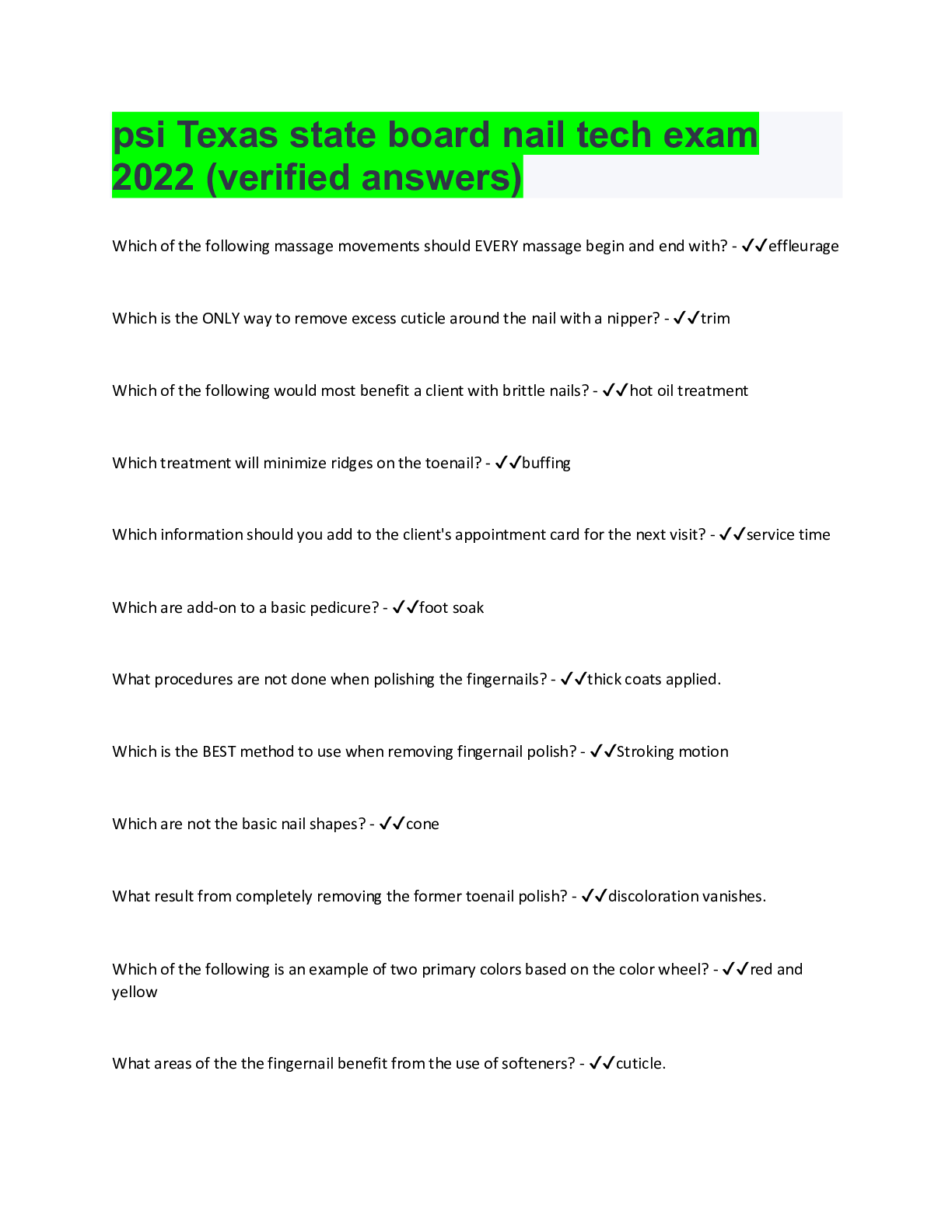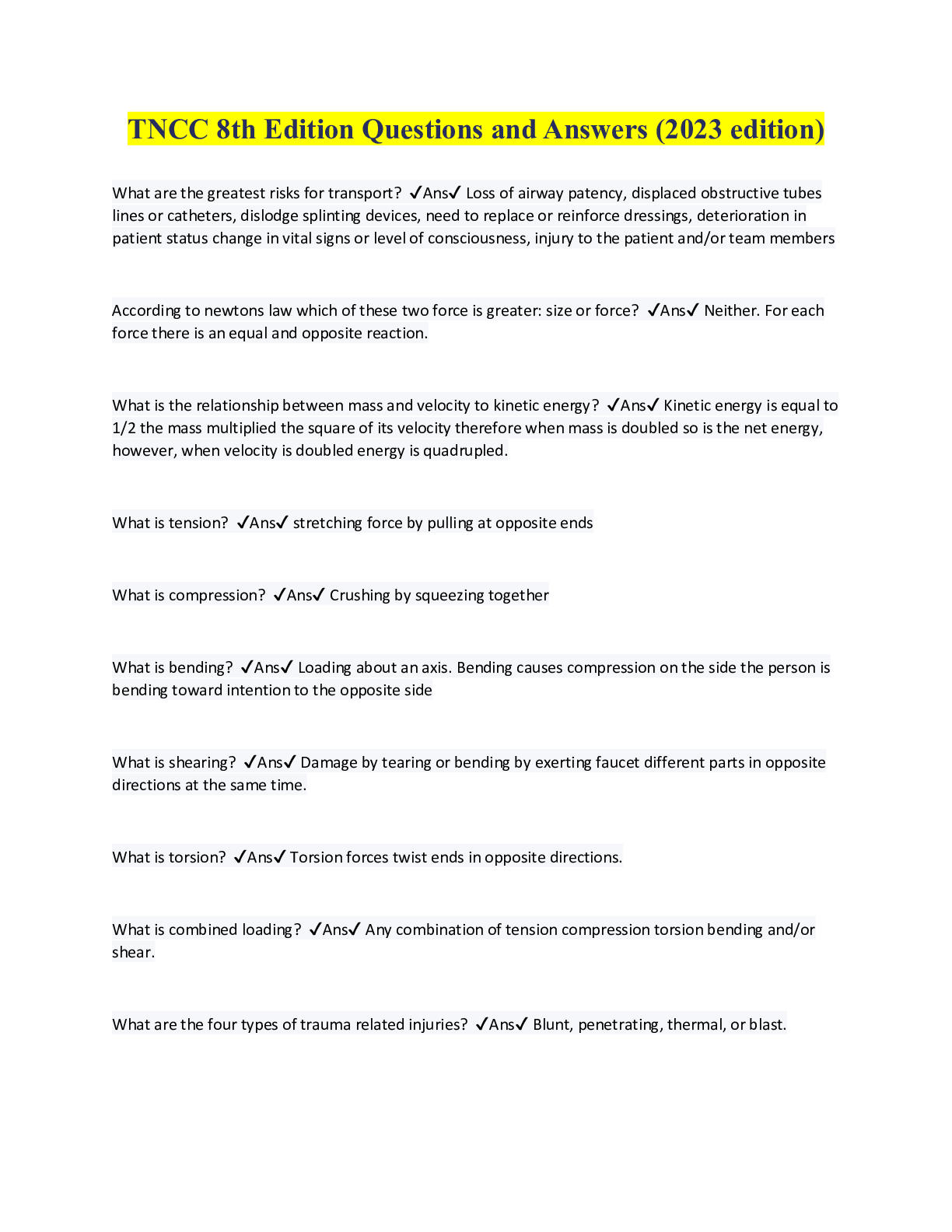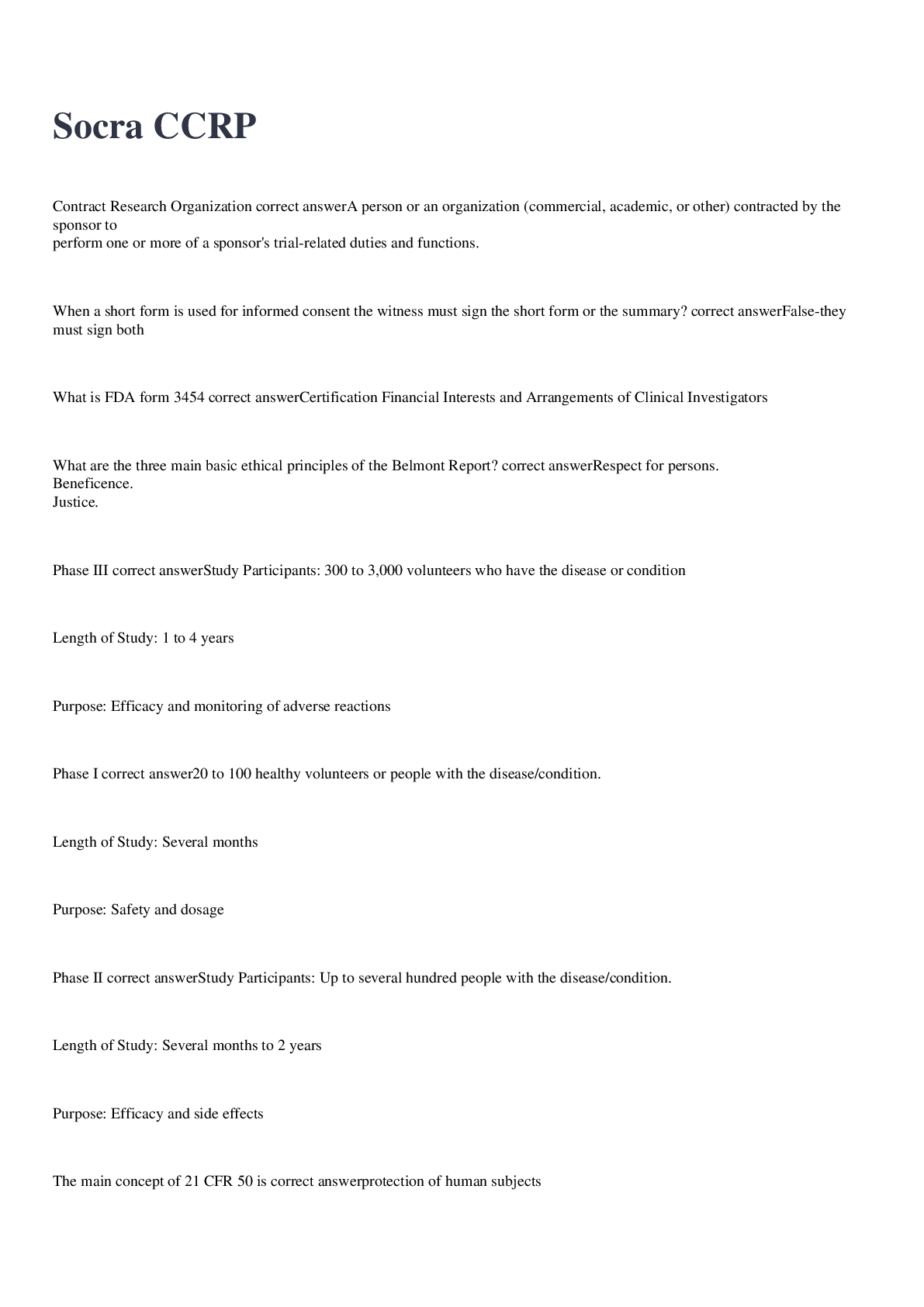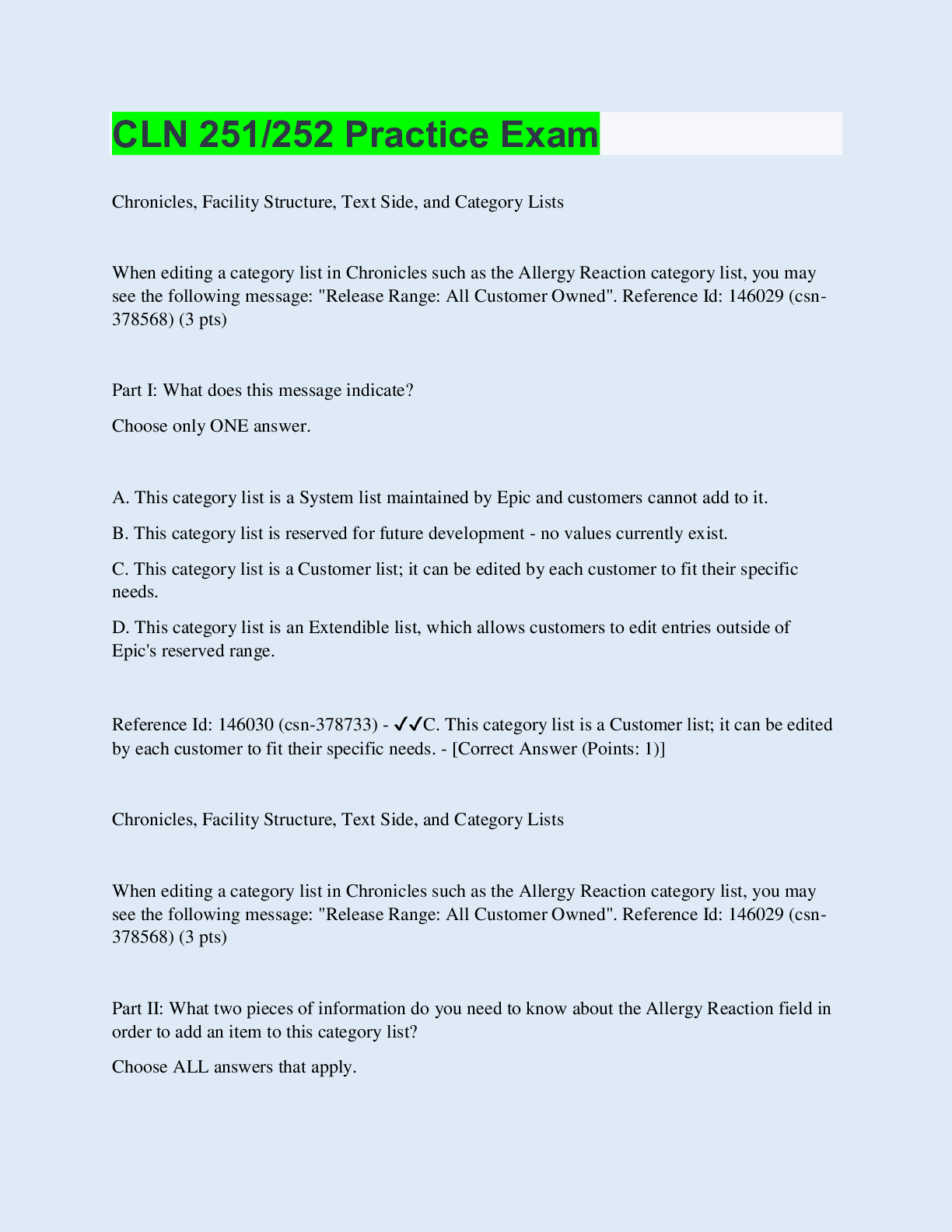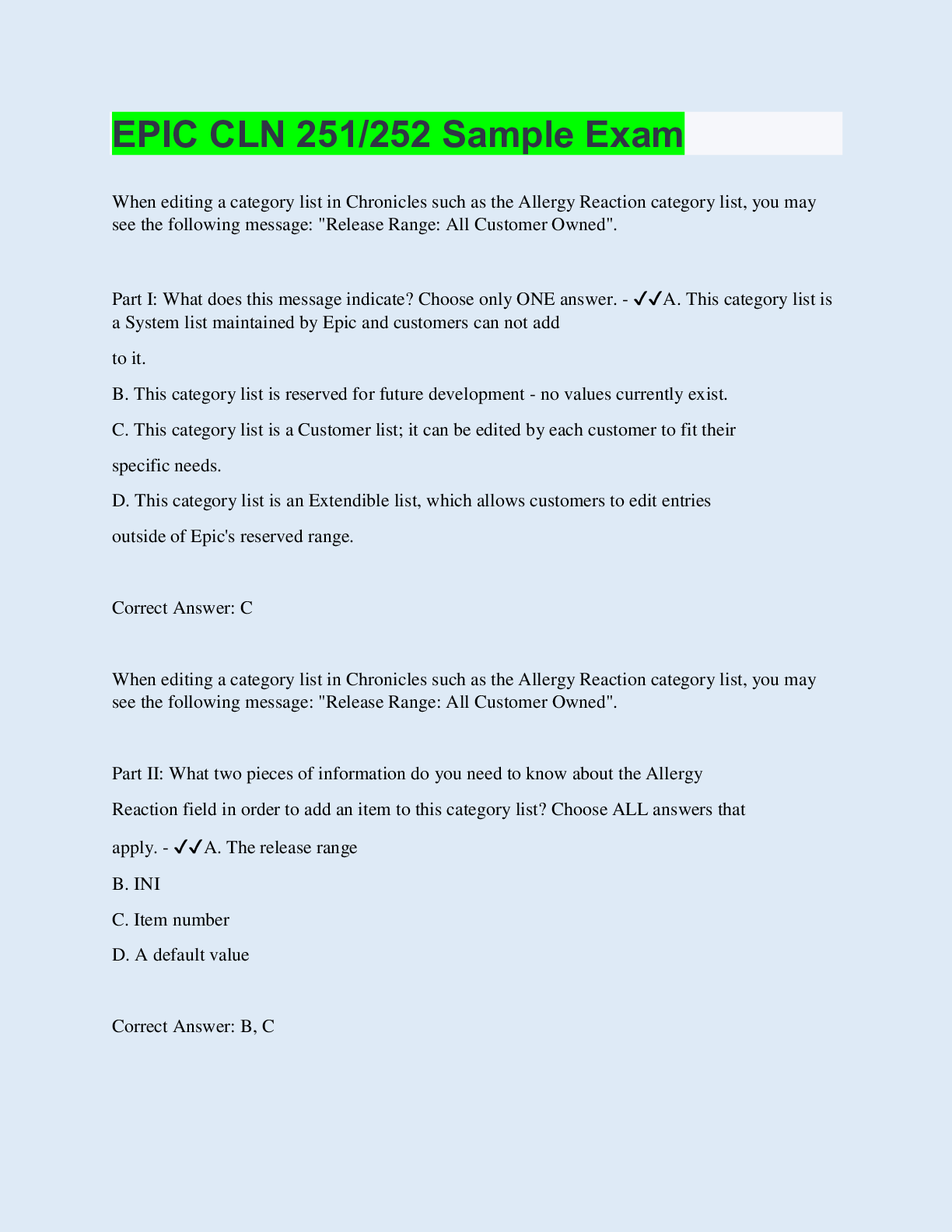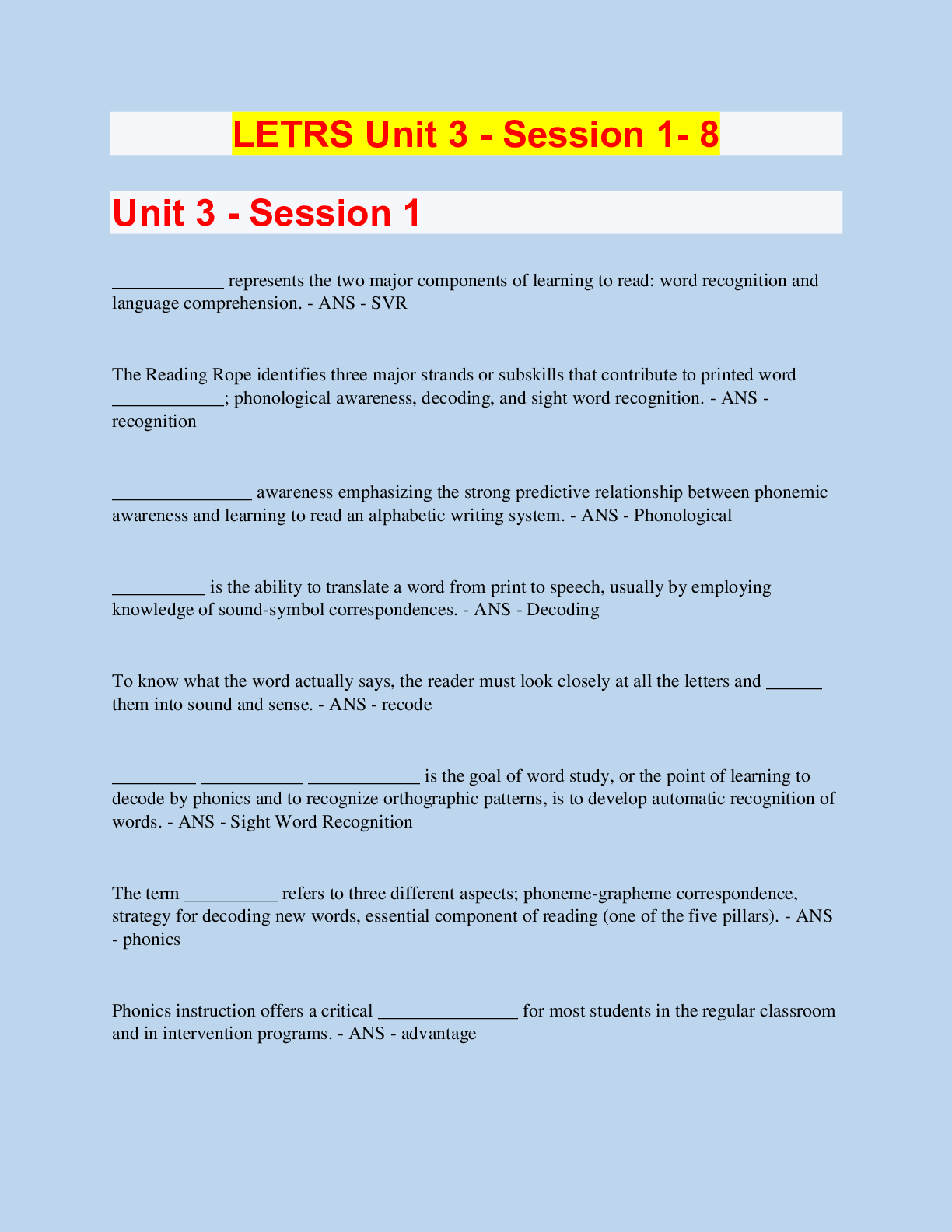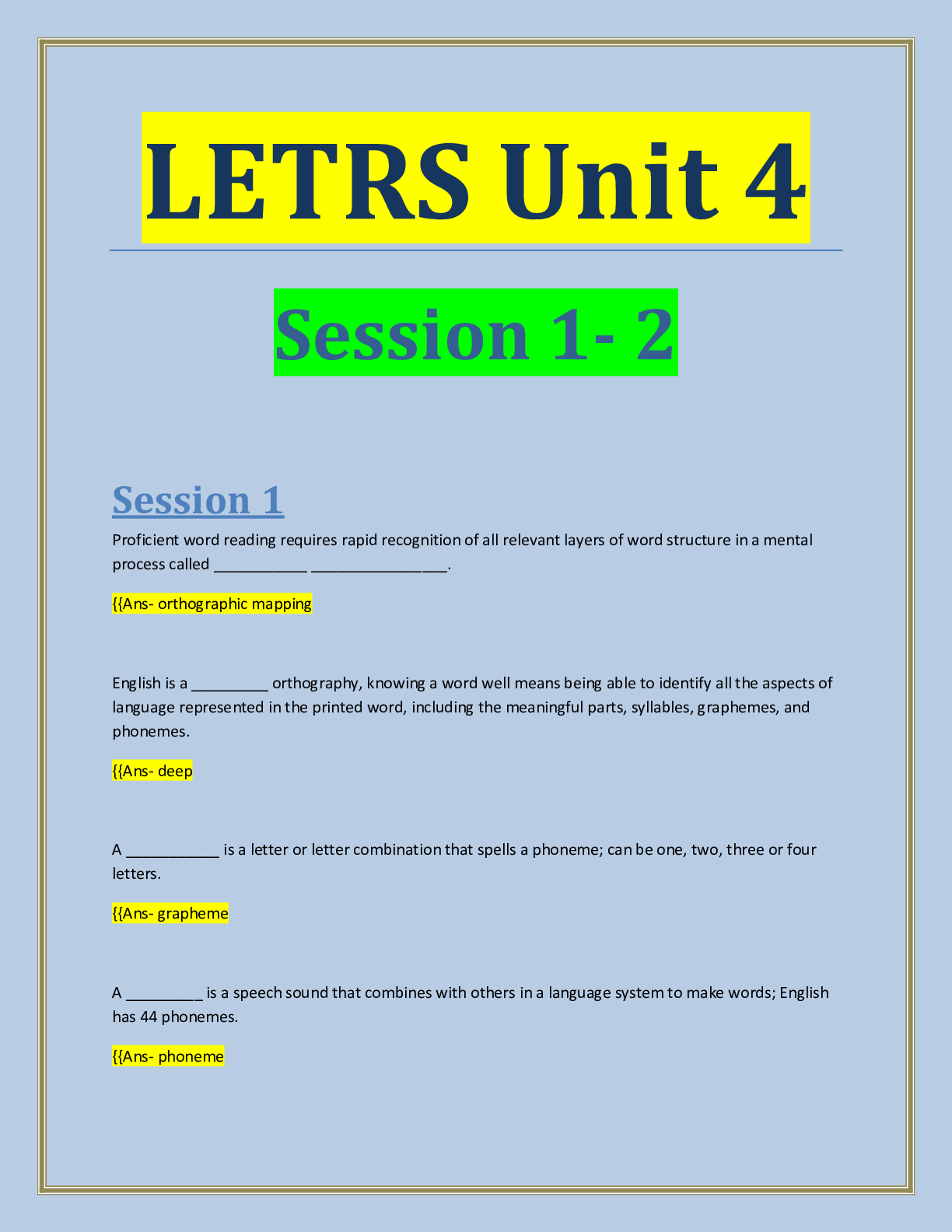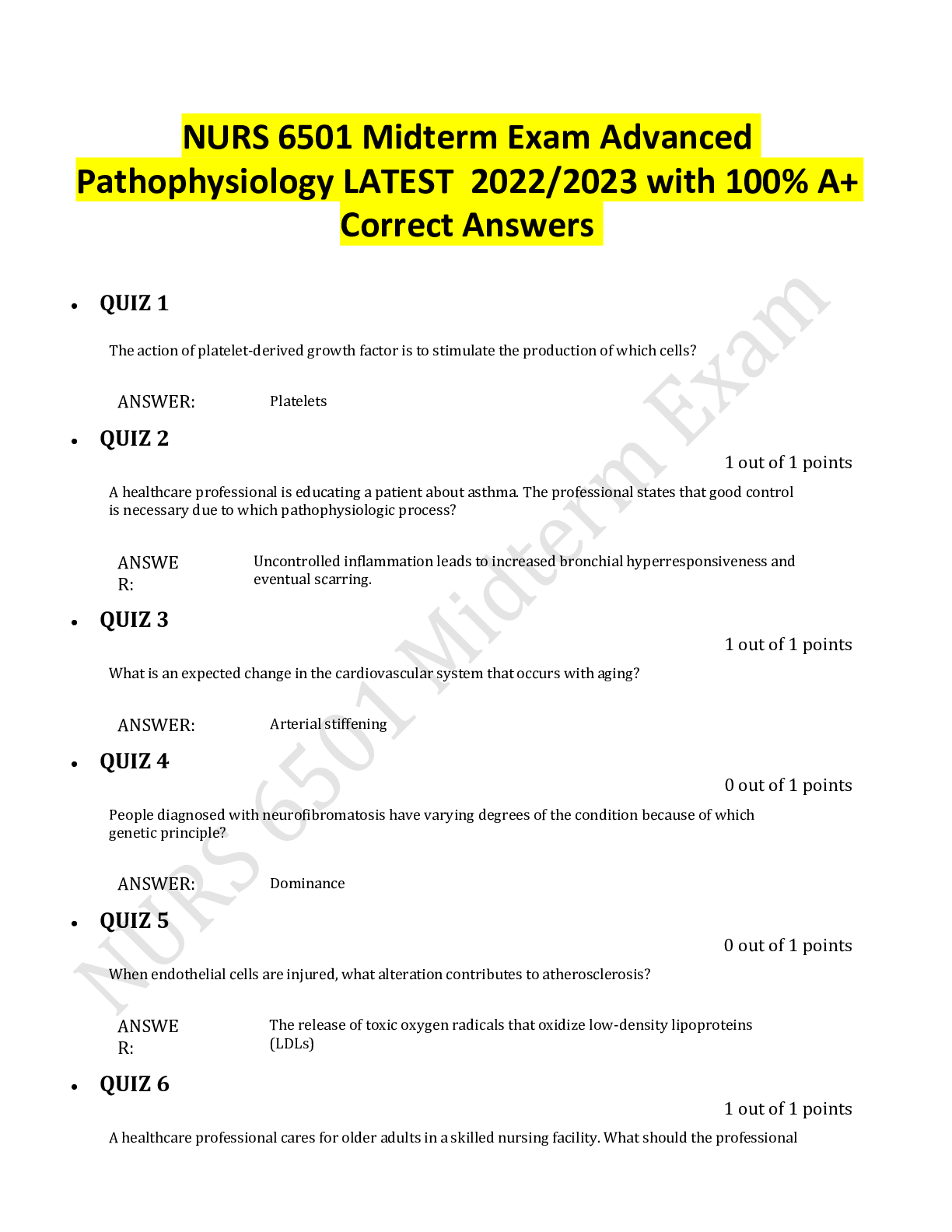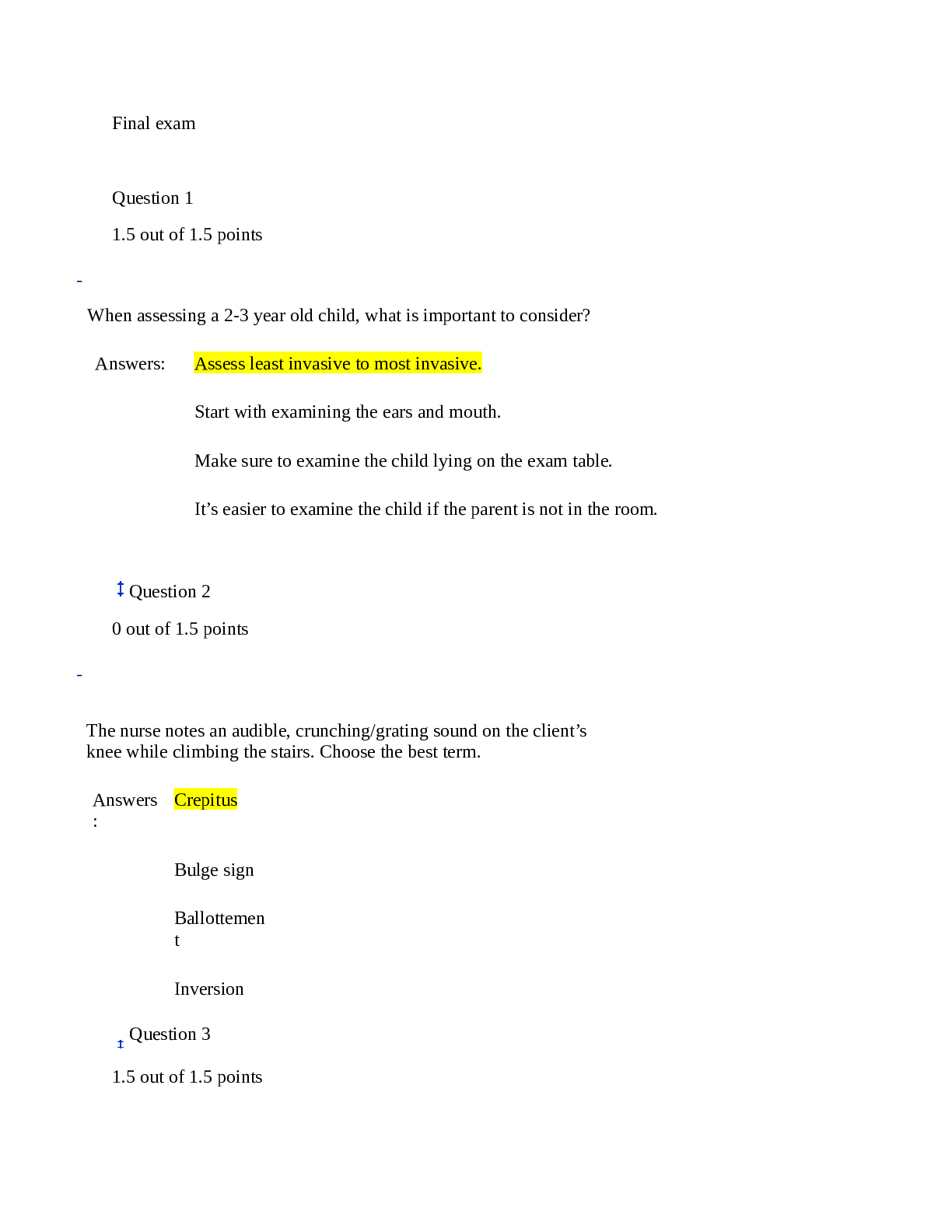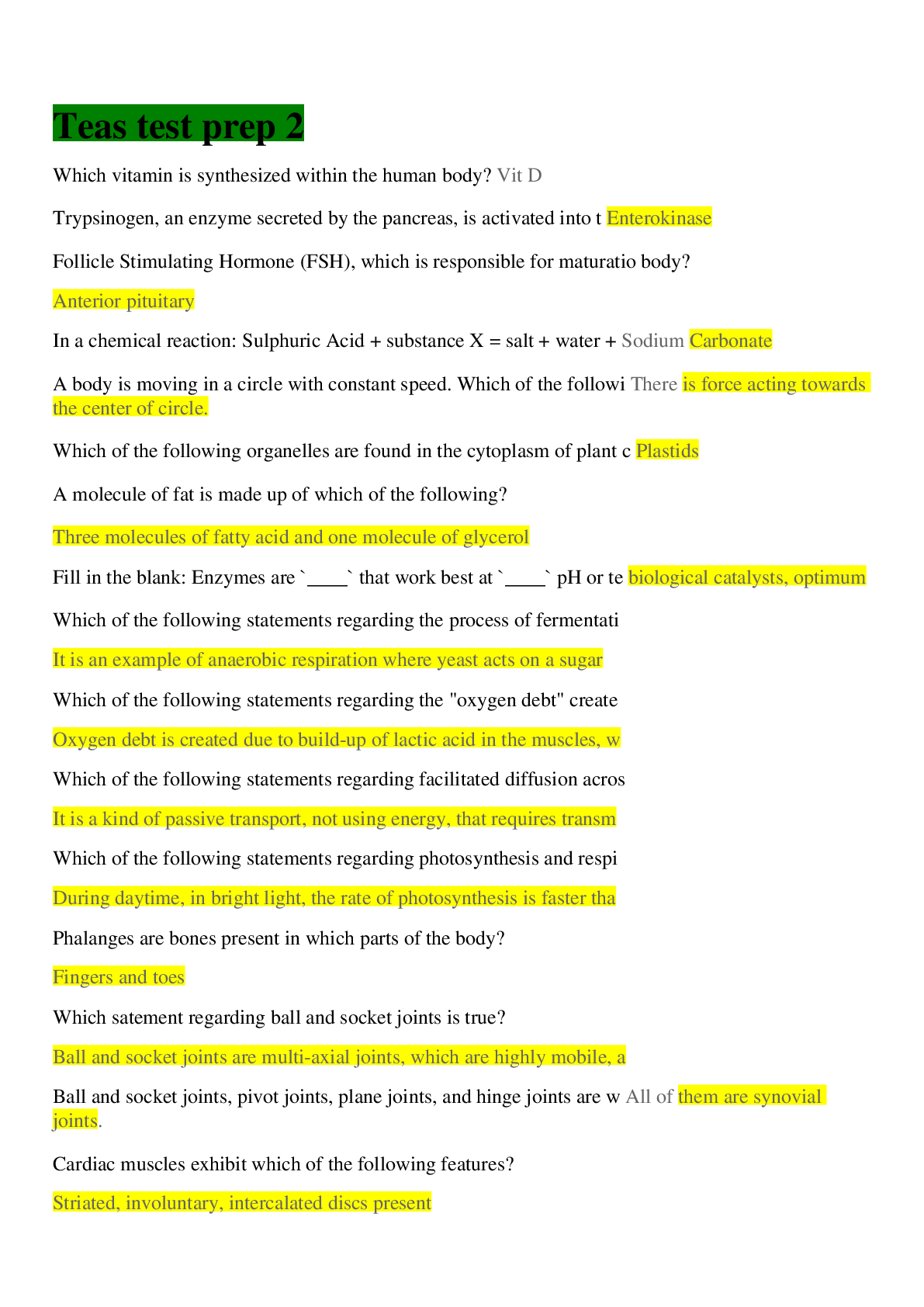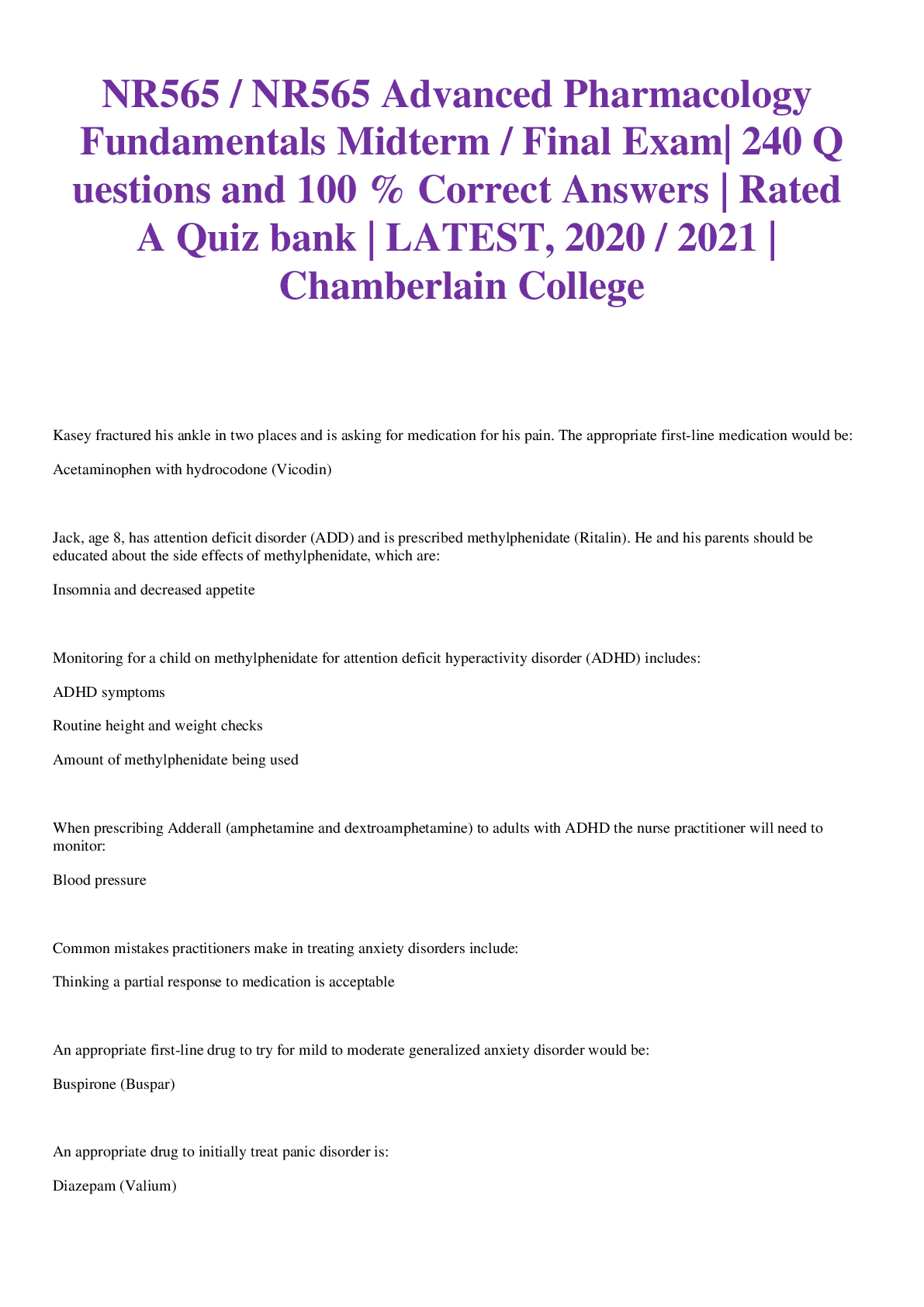SHRM-CP - PRACTICE EXAM | 100 Questions with 100% Correct Answers
Document Content and Description Below
1) A specialized field which works on engineering the work environment is: A. industrial existentialism. B. ergonomics. C. environmentalism. D. engineering design - ✔✔B. ergonomics. 2) A primar... y advantage of unstructured versus structured interviewing techniques is that: A. structured interviews take less time B. in an unstructured interview, the interviewer can ask follow-up questions and pursue points of interest as they develop C. unstructured interviews are in compliance with EEOC regulations, whereas structured interviews are not D. unstructured interviews are more cost effective - ✔✔B. in an unstructured interview, the interviewer can ask follow-up questions and pursue points of interest as they develop 3) A common repatriation problem for international companies is that: A. repatriation usually precipitates employee grievances B. there is usually high employee turnover following repatriation C. repatriated employees usually demand significantly higher salaries D. repatriated employees generally do not wish to return to the U.S. - ✔✔B. there is usually high employee turnover following repatriation 4) If an OSHA inspector shows up at the workplace, the first step an HR professional should take is: A. check and verify the inspector's credentials B. close the workplace and send the employees home C. deny any violation noted by the inspector D. secure all health and safety related company records in a locked location - ✔✔A. check and verify the inspector's credentials 5) Comparing the expense of a program versus its projected and identifiable results is using which planning technique? A. Zero-based budgeting B. MBO C. Cost-benefit analysis D. Variable budgeting - ✔✔C. Cost-benefit analysis 6) Frederick Taylor is noted for his contribution to: A. performance appraisal systems B. "humanizing" the workplace C. Making the work process more efficient and less fatiguing D. Pension reform - ✔✔C. Making the work process more efficient and less fatiguing 7) An HR professional is investigating reasons for job turnover among company employees moving from one job or department to another. Which data collection method would provide the information without interdepartmental conflicts? A. Surveys to all employees who have changed positions within the last year. B. Group interviews with employees and previous supervisors to discuss reasons for job changes. C. Search through performance appraisal files and personnel records to learn reasons for job turnover within the company. D. Questionnaires distributed only to employees who have changed positions - ✔✔C. Search through performance appraisal files and personnel records to learn reasons for job turnover within the company. [Show More]
Last updated: 1 year ago
Preview 1 out of 13 pages

Also available in bundle (2)

Bundle for SHRM Tests Compilation
Bundle for SHRM Tests Compilation
By Tessa 1 year ago
$29
18

Bundle for SHRM Tests Compilation
Bundle for SHRM Tests Compilation
By Tessa 1 year ago
$50
18
Reviews( 0 )
Document information
Connected school, study & course
About the document
Uploaded On
Aug 07, 2022
Number of pages
13
Written in
Additional information
This document has been written for:
Uploaded
Aug 07, 2022
Downloads
0
Views
79


